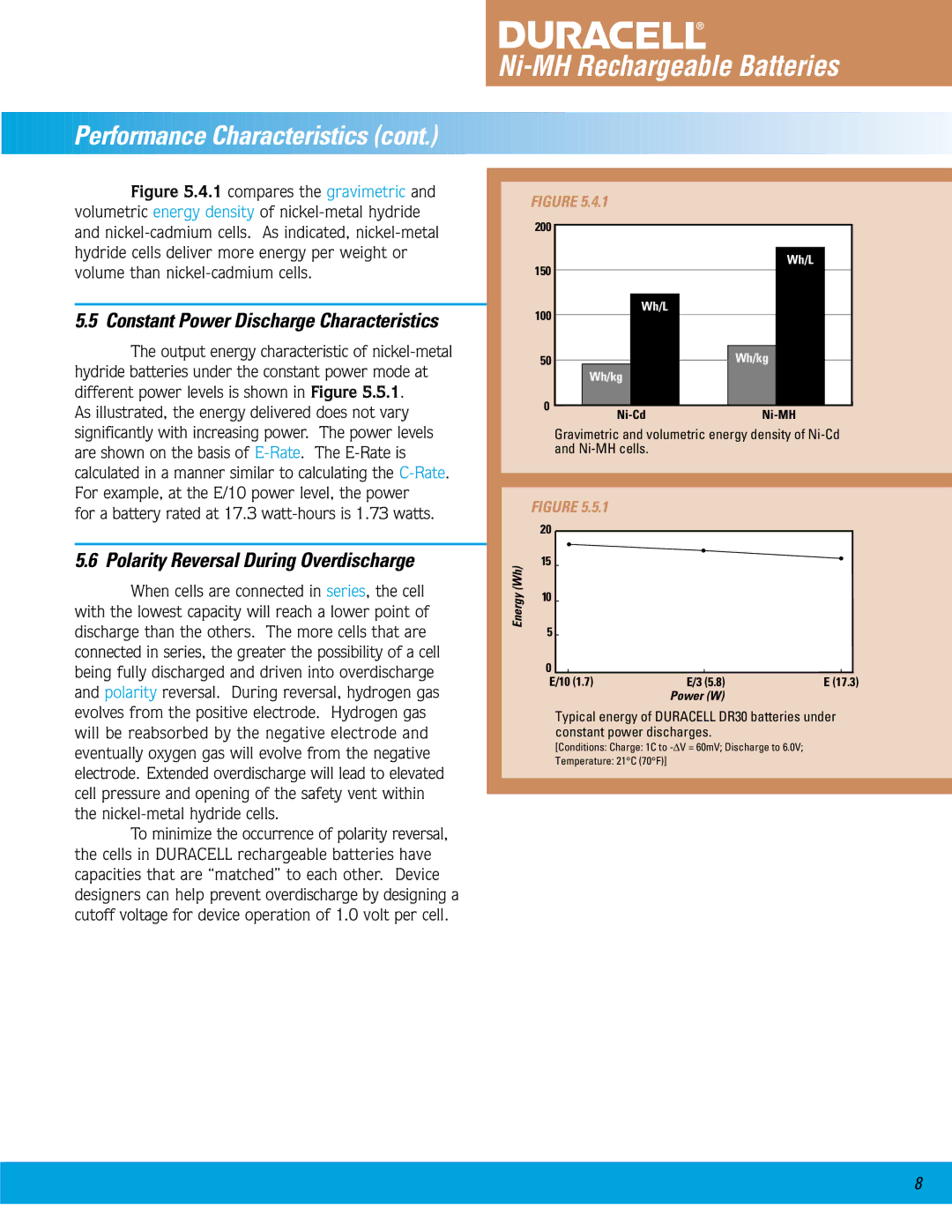
Ni-MH Rechargeable Batteries






 Perf
Perf
 ormance
ormance Char
Char
 acteristics
acteristics (
( cont.)
cont.)







Figure 5.4.1 compares the gravimetric and volumetric energy density of nickel-metal hydride and nickel-cadmium cells. As indicated, nickel-metal hydride cells deliver more energy per weight or volume than nickel-cadmium cells.
5.5 Constant Power Discharge Characteristics
The output energy characteristic of
As illustrated, the energy delivered does not vary significantly with increasing power. The power levels are shown on the basis of
for a battery rated at 17.3
5.6 Polarity Reversal During Overdischarge
When cells are connected in series, the cell with the lowest capacity will reach a lower point of discharge than the others. The more cells that are connected in series, the greater the possibility of a cell being fully discharged and driven into overdischarge and polarity reversal. During reversal, hydrogen gas evolves from the positive electrode. Hydrogen gas will be reabsorbed by the negative electrode and eventually oxygen gas will evolve from the negative electrode. Extended overdischarge will lead to elevated cell pressure and opening of the safety vent within the
To minimize the occurrence of polarity reversal, the cells in DURACELL rechargeable batteries have capacities that are “matched” to each other. Device designers can help prevent overdischarge by designing a cutoff voltage for device operation of 1.0 volt per cell.
FIGURE 5.4.1
200 |
|
|
|
|
|
|
|
|
|
|
|
|
|
| |
|
|
|
|
|
|
| |
150 |
|
|
|
|
| Wh/L |
|
|
|
|
|
|
|
| |
|
|
|
|
|
|
| |
|
|
|
|
|
|
| |
100 |
|
| Wh/L |
|
|
|
|
|
|
|
|
|
|
| |
|
|
|
|
|
|
|
|
50 |
|
|
|
| Wh/kg |
|
|
|
| Wh/kg |
|
|
|
|
|
0 |
|
|
|
|
|
|
|
| |||||||
|
| ||||||
Gravimetric and volumetric energy density of
FIGURE 5.5.1
| 20 |
|
|
(Wh) | 15 |
|
|
10 |
|
| |
Energy |
|
| |
5 |
|
| |
|
|
| |
| 0 |
|
|
| E/10 (1.7) | E/3 (5.8) | E (17.3) |
Power (W)
Typical energy of DURACELL DR30 batteries under constant power discharges.
[Conditions: Charge: 1C to
Temperature: 21°C (70°F)]
8
